Product Description
Agricultural Motorcycle Auto Track Trailer Front Wheel Hub Car Motorcycle Spare Parts 6310 Deep Groove Ball Bearing with high precision
Bearing parameters:
| CHROME STEEL* | Dimensions in mm unless otherwise specified |
||||||
| Bore | O.D. | Width | Open Bearing | Shielded Bearing | Sealed Bearing | Basic Load Ratings | |
| KN | |||||||
| HNS | HNS | HNS | dynamic | static | |||
| Reference | Reference | Reference | C | Co | |||
| 20 | 42 | 12 | 6004 | 6004ZZ | 6004-2RS | 7.22 | 4.46 |
| 47 | 14 | 6204 | 6204ZZ | 6204-2RS | 12.7 | 6.5 | |
| 52 | 15 | 6304 | 6304ZZ | 6304-2RS | 15.9 | 7.8 | |
| 25 | 47 | 12 | 6005 | 6005ZZ | 6005-2RS | 10.1 | 5.85 |
| 52 | 15 | 6205 | 6205ZZ | 6205-2RS | 14 | 7.8 | |
| 62 | 17 | 6305 | 6305ZZ | 6305-2RS | 22.5 | 11.6 | |
| 80 | 21 | 6405 | 6405ZZ | 6405-2RS | 36.1 | 19.4 | |
| 30 | 55 | 13 | 6006 | 6006ZZ | 6006-2RS | 10.2 | 6.91 |
| 62 | 16 | 6206 | 6206ZZ | 6206-2RS | 19.5 | 11.2 | |
| 72 | 19 | 6306 | 6306ZZ | 6306-2RS | 28.1 | 16 | |
| 90 | 23 | 6406 | 6406ZZ | 6406-2RS | 43.4 | 23.9 | |
| 35 | 62 | 14 | 6007 | 6007ZZ | 6007-2RS | 16 | 10.3 |
| 72 | 17 | 6207 | 6207ZZ | 6207-2RS | 25.5 | 15.3 | |
| 80 | 21 | 6307 | 6307ZZ | 6307-2RS | 33.2 | 19 | |
| 100 | 25 | 6407 | 6407ZZ | 6407-2RS | 55 | 31 | |
| 40 | 68 | 15 | 6008 | 6008ZZ | 6008-2RS | 13 | 11.5 |
| 80 | 18 | 6208 | 6208ZZ | 6208-2RS | 29.8 | 18 | |
| 90 | 23 | 6308 | 6308ZZ | 6308-2RS | 39.8 | 23.3 | |
| 110 | 27 | 6408 | 6408ZZ | 6408-2RS | 65.5 | 37.5 | |
| 45 | 75 | 16 | 6009 | 6009ZZ | 6009-2RS | 21 | 14.9 |
| 85 | 19 | 6209 | 6209ZZ | 6209-2RS | 32.2 | 21 | |
| 100 | 25 | 6309 | 6309ZZ | 6309-2RS | 51.1 | 30.5 | |
| 120 | 29 | 6409 | 6409ZZ | 6409-2RS | 77.5 | 45.5 | |
| 50 | 80 | 16 | 6571 | 6571ZZ | 6571-2RS | 22 | 16.2 |
| 90 | 20 | 6210 | 6210ZZ | 6210-2RS | 34 | 22.5 | |
| 110 | 27 | 6310 | 6310ZZ | 6310-2RS | 59.9 | 36.9 | |
| 130 | 31 | 6410 | 6410ZZ | 6410-2RS | 92.2 | 55.2 | |
| 55 | 90 | 18 | 6011 | 6011ZZ | 6011-2RS | 30.4 | 22 |
| 100 | 21 | 6211 | 6211ZZ | 6211-2RS | 43.3 | 28.1 | |
| 120 | 29 | 6311 | 6311ZZ | 6311-2RS | 71.5 | 44.6 | |
| 140 | 33 | 6411 | 6411ZZ | 6411-2RS | 100 | 62.5 | |
| 60 | 95 | 18 | 6012 | 6012ZZ | 6012-2RS | 30.7 | 22.7 |
| 110 | 22 | 6212 | 6212ZZ | 6212-2RS | 46.1 | 31.5 | |
| 130 | 31 | 6312 | 6312ZZ | 6312-2RS | 79.4 | 50.4 | |
| 150 | 35 | 6412 | 6412ZZ | 6412-2RS | 109 | 70 | |
| 65 | 100 | 18 | 6013 | 6013ZZ | 6013-2RS | 32.1 | 24.9 |
| 120 | 23 | 6213 | 6213ZZ | 6213-2RS | 54.2 | 39.3 | |
| 140 | 33 | 6313 | 6313ZZ | 6313-2RS | 89.5 | 59.7 | |
| 160 | 37 | 6413 | 6413ZZ | 6413-2RS | 118 | 78.5 | |
| 70 | 110 | 20 | 6014 | 6014ZZ | 6014-2RS | 38.6 | 30.6 |
| 125 | 24 | 6214 | 6214ZZ | 6214-2RS | 58.9 | 43.6 | |
| 150 | 35 | 6314 | 6314ZZ | 6314-2RS | 101 | 66 | |
| 180 | 42 | 6414 | 6414ZZ | 6414-2RS | 140 | 99.5 | |
| 75 | 115 | 20 | 6015 | 6015ZZ | 6015-2RS | 31 | 33.1 |
| 130 | 25 | 6215 | 6215ZZ | 6215-2RS | 64.3 | 47.5 | |
| 160 | 37 | 6315 | 6315ZZ | 6315-2RS | 111 | 74.2 | |
| 190 | 45 | 6415 | 6415ZZ | 6415-2RS | 154 | 115 | |
| 80 | 125 | 22 | 6016 | 6016ZZ | 6016-2RS | 47.5 | 39.8 |
| 140 | 26 | 6216 | 6216ZZ | 6216-2RS | 68.1 | 53.3 | |
| 170 | 39 | 6316 | 6316ZZ | 6316-2RS | 120 | 83.9 | |
| 200 | 48 | 6416 | 6416ZZ | 6416-2RS | 163 | 125 | |
| 85 | 130 | 22 | 6017 | 6017ZZ | 6017-2RS | 50.8 | 42.8 |
| 150 | 28 | 6217 | 6217ZZ | 6217-2RS | 83.2 | 64 | |
| 180 | 41 | 6317 | 6317ZZ | 6317-2RS | 132 | 96.5 | |
| 210 | 52 | 6417 | 6417ZZ | 6417-2RS | 175 | 138 | |
| 90 | 140 | 24 | 6018 | 6018ZZ | 6018-2RS | 58 | 49.8 |
| 160 | 30 | 6218 | 6218ZZ | 6218-2RS | 92.7 | 71.3 | |
| 190 | 43 | 6318 | 6318ZZ | 6318-2RS | 145 | 108 | |
| 225 | 54 | 6418 | 6418ZZ | 6418-2RS | 192 | 158 | |
| 95 | 145 | 24 | 6019 | 6019ZZ | 6019-2RS | 57.8 | 50 |
| 170 | 32 | 6219 | 6219ZZ | 6219-2RS | 105 | 79.1 | |
| 200 | 45 | 6319 | 6319ZZ | 6319-2RS | 157 | 122 | |
| 100 | 150 | 24 | 6571 | 6571ZZ | 6571-2RS | 64.5 | 56.2 |
| 180 | 34 | 6220 | 6220ZZ | 6220-2RS | 118 | 88.4 | |
| 215 | 47 | 6320 | 6320ZZ | 6320-2RS | 173 | 140 | |
| 105 | 160 | 26 | 6571 | 6571ZZ | 6571-2RS | 71.8 | 63.2 |
| 190 | 36 | 6221 | 6221ZZ | 6221-2RS | 126 | 98.8 | |
| 225 | 49 | 6321 | 6321ZZ | 6321-2RS | 173 | 145 | |
| 110 | 170 | 28 | 6571 | 6571ZZ | 6571-2RS | 81.9 | 72.9 |
| 200 | 38 | 6222 | 6222ZZ | 6222-2RS | 136 | 112 | |
| 240 | 50 | 6322 | 6322ZZ | 6322-2RS | 193 | 171 | |
| 120 | 180 | 28 | 6571 | 6571ZZ | 6571-2RS | 88.7 | 79.7 |
| 215 | 40 | 6224 | 6224ZZ | 6224-2RS | 139 | 112 | |
| 260 | 55 | 6324 | 6324ZZ | 6324-2RS | 217 | 196 | |
| 130 | 200 | 33 | 6026 | 6026ZZ | 6026-2RS | 105 | 96.8 |
| 230 | 40 | 6226 | 6226ZZ | 6226-2RS | 148 | 125 | |
| 280 | 58 | 6326 | 6326ZZ | 6326-2RS | 218 | 205 | |
| 140 | 210 | 33 | 6571 | 6571ZZ | 6571-2RS | 116 | 108 |
| 250 | 42 | 6228 | 6228ZZ | 6228-2RS | 179 | 167 | |
| 300 | 62 | 6328 | 6328ZZ | 6328-2RS | 275 | 272 | |
| 150 | 225 | 35 | 6030 | 6030ZZ | 6030-2RS | 132 | 125 |
| 270 | 45 | 6230 | 6230ZZ | 6230-2RS | 190 | 183 | |
| 160 | 240 | 38 | 6032 | 6032ZZ | 6032-2RS | 145 | 138 |
| 290 | 48 | 6232 | 6232ZZ | 6232-2RS | 215 | 218 | |
About Deep Groove Ball Cearing
- 6000 Series – Extra Light Ball Bearings – Ideal for limited space applications
- 6200 Series – Light Series Ball Bearings – Balanced between space and load capacity
- 6300 Series – Medium Series Ball Bearings – Ideal for heavier load capacity applications
Deep groove ball bearing component:
Rich bearings in stock:
OEM is available:
Application
Package:
A. Plastic paper + kraft paper + outer carton + Nylon bag
B. Tube package + outer carton + Nylon bag
C. Single box + outer carton + pallets
D. According to your requirement
For more information, contact us directly pls.
/* January 22, 2571 19:08:37 */!function(){function s(e,r){var a,o={};try{e&&e.split(“,”).forEach(function(e,t){e&&(a=e.match(/(.*?):(.*)$/))&&1
| Aligning: | Non-Aligning Bearing |
|---|---|
| Separated: | Unseparated |
| Rows Number: | Single |
| Load Direction: | Radial Bearing |
| Material: | Bearing Steel |
| Contact Angle: | 0 |
| Samples: |
US$ 0.01/Piece
1 Piece(Min.Order) | |
|---|
| Customization: |
Available
| Customized Request |
|---|
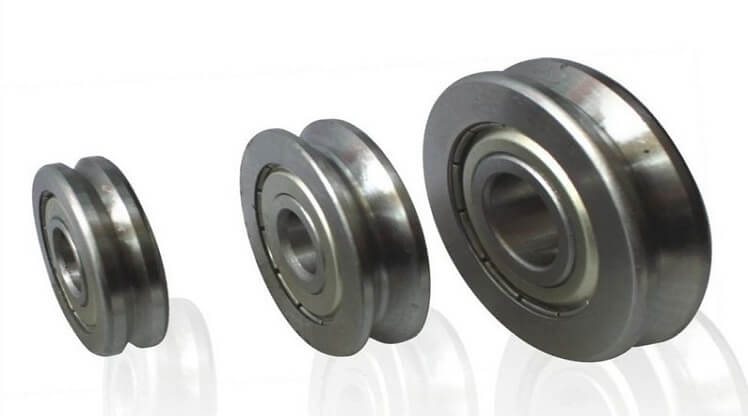
Can you explain the maintenance and lubrication requirements for track bearings?
Maintenance and lubrication are essential aspects of ensuring the optimal performance and longevity of track bearings. Proper maintenance practices and appropriate lubrication help minimize wear, reduce friction, prevent corrosion, and extend the service life of the bearings. Here’s an explanation of the maintenance and lubrication requirements for track bearings:
Maintenance Requirements:
- Cleanliness: It is crucial to maintain a clean operating environment for track bearings. Regularly remove dirt, dust, and debris from the track and bearing surfaces to prevent contamination, which can lead to premature wear and damage.
- Inspection: Periodically inspect the track bearings for signs of wear, damage, or misalignment. Check for excessive play, noise, or roughness during operation. If any issues are detected, take appropriate measures such as bearing replacement or realignment to ensure optimal performance.
- Tightening and Fasteners: Check the tightness of fasteners, such as bolts or screws, that secure the track bearings. Loose fasteners can lead to misalignment or instability. Ensure that all fasteners are properly tightened according to the manufacturer’s specifications.
- Track Alignment: Proper track alignment is crucial for smooth and efficient operation of track bearings. Regularly check the alignment of the track or guide rails and make necessary adjustments to maintain proper alignment, minimizing excessive loads and wear on the bearings.
- Load Limits: Adhere to the specified load limits for the track bearings. Exceeding the recommended load capacity can cause premature wear and failure. Consider the dynamic and static load ratings of the bearings to ensure they are not subjected to excessive loads that can compromise their performance.
Lubrication Requirements:
- Proper Lubricant Selection: Select the appropriate lubricant based on the operating conditions, such as temperature, load, and speed. Consult the manufacturer’s recommendations or seek expert advice to ensure the lubricant’s compatibility with the track bearings and the specific application.
- Regular Lubrication: Follow a regular lubrication schedule as recommended by the manufacturer. This may involve applying lubricant at specified intervals or based on the operating hours. Adequate lubrication helps minimize friction, reduce wear, and maintain proper functioning of the track bearings.
- Correct Lubrication Method: Apply the lubricant using the appropriate method, whether it’s manual greasing, automatic lubrication systems, or specialized lubrication techniques. Ensure that the lubricant reaches all necessary contact points and provides sufficient coverage to the bearing surfaces.
- Monitoring and Replenishment: Monitor the lubricant levels regularly and replenish as needed. In some cases, track bearings may have built-in lubrication systems that require periodic refilling or maintenance. Keep track of the lubricant condition and replace it when it becomes contaminated or degraded.
- Environmental Considerations: Consider the operating environment when selecting the lubricant. Extreme temperatures, exposure to moisture, or the presence of chemicals or contaminants may require special lubricants that can withstand these conditions and provide effective protection and lubrication.
It is important to consult the manufacturer’s guidelines and recommendations specific to the track bearings being used. Following the recommended maintenance and lubrication practices ensures optimal performance, reduces the risk of premature failure, and maximizes the overall lifespan of the track bearings.
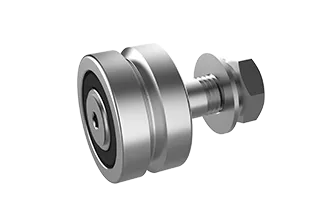
How do track bearings enhance the overall efficiency and functionality of linear motion systems?
Track bearings play a crucial role in enhancing the overall efficiency and functionality of linear motion systems. They offer several benefits that contribute to improved performance, increased reliability, and enhanced functionality. Here’s a detailed explanation:
- Reduced Friction: Track bearings are designed to minimize friction between moving components, allowing for smoother and more efficient linear motion. By reducing friction, they help to optimize the efficiency of the system, reducing energy consumption and minimizing wear on the components.
- Precision and Stability: Track bearings provide precise guidance and stability to the linear motion system. They ensure accurate and repeatable motion along the intended path, allowing for precise positioning and control. This is particularly important in applications that require high accuracy, such as CNC machines, robotics, and automated assembly lines.
- Load Distribution: Track bearings distribute the load evenly along their length, allowing for efficient load transfer and reducing the concentration of forces on specific components. This helps to prevent excessive wear, deformation, and premature failure of the system, improving overall reliability and longevity.
- Handling Heavy Loads: Track bearings are specifically designed to handle heavy loads in linear motion systems. They offer high load capacities and robust construction, enabling them to support and move heavy objects with ease. This capability is essential in industries such as material handling, construction, and transportation.
- Smooth and Quiet Operation: Track bearings are engineered to provide smooth and quiet operation, minimizing noise and vibrations in the linear motion system. This is especially important in applications where noise reduction and comfort are critical, such as in medical equipment, office automation, and consumer electronics.
- Versatility and Adaptability: Track bearings come in various designs, sizes, and configurations to accommodate different linear motion system requirements. They can be easily integrated into existing systems or customized to fit specific applications. This versatility allows for greater flexibility and adaptability in designing and implementing linear motion solutions.
- Maintenance and Serviceability: Track bearings are designed for ease of maintenance and serviceability. They often feature removable components, such as seals or shields, that allow for inspection, cleaning, and lubrication. This simplifies maintenance tasks and reduces downtime, contributing to improved overall system efficiency and uptime.
By incorporating track bearings into linear motion systems, industries can benefit from increased efficiency, improved performance, and enhanced functionality. Whether it’s achieving precise positioning, handling heavy loads, reducing friction, or ensuring smooth operation, track bearings play a vital role in optimizing the overall efficiency and functionality of linear motion systems.
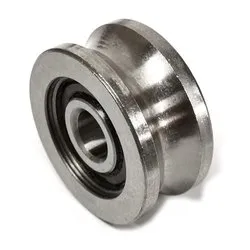
Can you explain the different types of track bearings used in industrial and mechanical systems?
Track bearings, also known as track rollers or track follower bearings, come in various types to suit different industrial and mechanical system requirements. Let’s explore the different types of track bearings commonly used in these applications:
- Yoke Type Track Rollers: Yoke type track rollers are a popular type of track bearing characterized by their thick outer rings. They are designed to handle high radial loads and moderate axial loads. Yoke type track rollers feature an inner ring with a stud for mounting on a shaft or stud. They are widely used in applications such as conveyors, cam mechanisms, material handling systems, and agricultural machinery.
- Stud Type Track Rollers: Stud type track rollers are similar to yoke type track rollers but lack an inner ring. Instead, they have a stud that serves as the mounting component. Stud type track rollers are suitable for applications with limited space or where the outer ring can be directly mounted onto a mating surface. They are commonly used in applications such as cam mechanisms, indexing equipment, and tensioning systems.
- Cam Followers: Cam followers, also known as cam bearings or track followers, are track bearings designed specifically for cam-driven systems. They have a stud or shaft for mounting and a built-in roller or needle bearing. Cam followers follow the profile of a cam, converting the rotary motion of the cam into linear or oscillating motion. They are used in applications such as printing presses, packaging machinery, textile machinery, and automotive engines.
- Guiding Track Rollers: Guiding track rollers are track bearings designed to provide precise and guided linear motion. They feature a thick outer ring with a track or guide surface. Guiding track rollers are commonly used in material handling systems, conveyor systems, and automated machinery to facilitate smooth and controlled movement along a track or guide rail.
- V-Groove Track Rollers: V-groove track rollers have a specialized V-shaped groove on the outer ring. This groove allows the rollers to run on V-shaped tracks or rails, providing accurate alignment and guidance. V-groove track rollers are used in applications such as track systems, sliding gates, and linear motion guides.
- Flanged Track Rollers: Flanged track rollers feature an additional flange on the outer ring. The flange helps in axial guidance and prevents the track roller from shifting or tilting under axial loads. Flanged track rollers are commonly used in applications such as cam mechanisms, linear motion systems, and conveyor systems.
- Idler Track Rollers: Idler track rollers are non-powered track rollers used to support and guide conveyor belts, chains, or other moving components. They are typically used in material handling systems, conveyor systems, and packaging machinery.
These different types of track bearings offer versatility and flexibility in industrial and mechanical systems. Depending on the specific application requirements, engineers and designers can select the most suitable type of track bearing to ensure smooth motion, reliable operation, and efficient load support. The choice of track bearing type depends on factors such as load capacity, space constraints, track configuration, and environmental conditions.


editor by CX 2024-05-17
China Hot selling Agricultural Motorcycle Auto Track Trailer Front Wheel Hub Unit Car Motorcycle Spare Parts 6301 6004 6203 6205 6310 Deep Groove Ball Bearing with high quality
Product Description
Product Description
Company Profile
ZheJiang CZPT Bearing Co., Ltd. is affiliated to ZheJiang Kaidi Bearing Group – a specialized manufacturer of kinds of bearings for about 20 years.
Our company is specialized in producing Deep Groove Ball Bearings, Tapered Roller Bearings, Spherical Roller Bearings and Special Bearings in accordance with Customers’ designs.Our bearings has been widely applied into agricultural equipments, home appliances, power equipments, machine tools, automotives and engineering machinery, etc.
Our Products
ZheJiang CZPT Bearing Co., Ltd. is a specialized manufacturer of ball bearings for about 20 years. Our main products include:
1, Miniature Bearings: like 608, 609, 625, 626, 693, 695, etc;
2, Deep Groove Ball Bearings: like 6000, 6200, 6300, 6800, 6900, 16000 Series;
3,Non-Standard Bearings: U grooved bearings, V grooved bearings, double grooved bearings, bearing rollers with or without plastic injection. 4,Pillow Block Bearing: UCP/ UCF/ UCFL;
5,Tapered Roller Bearings
6,Linear Motion Bearings
Processing Process
we have manufacture bearing more than 20 years, and can produce different style of bearings. Our factory starts production from raw materials. We have a 20-person R&D team and launch a new product every 5 days. We have more than 600 people to produce bearing team, we produce products, the price is the most competitive in China.
Packaging & Shipping
Our Activities
FAQ
|
1.Q:Do you know the Detail Size for the Bearing ? 2.Q: This Size of Bearing is common parts? 3.Q:Are you a factory or a Trade Company for Bearing ? 4.Q:How many the MOQ of the Bearing? 5.Q:Could you supply free sample of bearing for our test? 6.Q:Could you accept OEM and customize? 7.Q:Do you have stocks? |
Contact Us
Jane
ZheJiang CZPT Bearing Co., Ltd.
/* March 10, 2571 17:59:20 */!function(){function s(e,r){var a,o={};try{e&&e.split(“,”).forEach(function(e,t){e&&(a=e.match(/(.*?):(.*)$/))&&1
| Contact Angle: | 15° |
|---|---|
| Aligning: | Non-Aligning Bearing |
| Separated: | Unseparated |
| Rows Number: | Single |
| Load Direction: | Thrust Bearing |
| Material: | Bearing Steel |
| Samples: |
US$ 0.05/Set
1 Set(Min.Order) | |
|---|
| Customization: |
Available
| Customized Request |
|---|
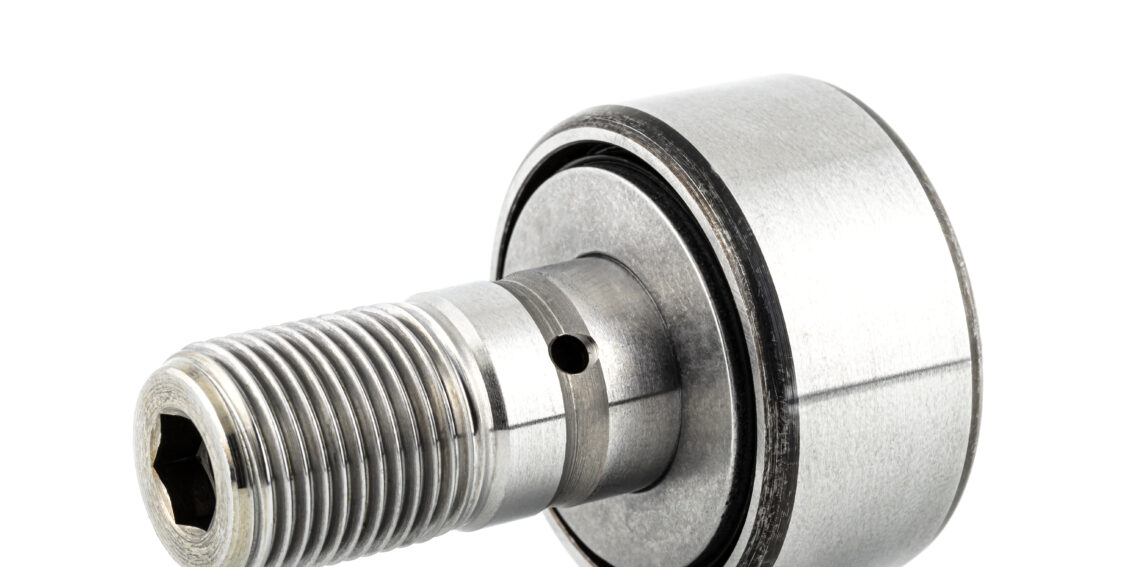
How does proper installation and alignment impact the performance and longevity of track bearings?
Proper installation and alignment play a critical role in the performance and longevity of track bearings. Correct installation ensures that the bearings are positioned and secured accurately, while proper alignment ensures that the load is distributed evenly and the bearings operate smoothly. Here’s an explanation of how proper installation and alignment impact the performance and longevity of track bearings:
Installation Impact:
- Load Distribution: Proper installation ensures that the track bearings are aligned and positioned correctly, allowing for even load distribution. When bearings are installed incorrectly, the load may be unevenly distributed, leading to excessive wear on certain parts of the bearings and reduced overall performance.
- Stability and Rigidity: Accurate installation provides stability and rigidity to the track bearings. Properly secured bearings minimize the risk of movement or vibration during operation, which can cause additional stress, premature wear, and potential damage to the bearings and surrounding components.
- Reduction of Misalignment: Correct installation minimizes the chances of misalignment between the track bearings and the track or guide rails. Misalignment can lead to uneven loading, increased friction, and accelerated wear and tear on the bearings. Proper alignment reduces these issues, ensuring smooth and efficient operation.
- Prevention of Contamination: During installation, it is important to take precautions to prevent contamination of the track bearings. Proper handling techniques, cleanliness, and the use of appropriate tools or protective measures help avoid introducing dirt, dust, or debris that can compromise the bearing’s performance and longevity.
Alignment Impact:
- Reduced Friction and Wear: Proper alignment of track bearings helps minimize friction and wear. When bearings are misaligned, excessive forces and irregular motion can occur, leading to increased friction and accelerated wear. Proper alignment ensures that the bearings operate within their intended design parameters, reducing friction and promoting longevity.
- Optimal Load Distribution: Correct alignment ensures that the load is distributed evenly across the track bearings. This prevents excessive stress on specific areas of the bearings, reducing the risk of premature failure and extending their service life. Optimal load distribution also contributes to smoother operation and improved overall performance.
- Minimized Noise and Vibration: Proper alignment helps minimize noise and vibration during operation. Misaligned track bearings can result in irregular motion, leading to unwanted noise and vibration that can affect the performance, comfort, and efficiency of the machinery or equipment. Proper alignment promotes smoother and quieter operation.
- Improved Efficiency: When track bearings are correctly aligned, the machinery or equipment experiences reduced resistance and improved efficiency. Misalignment can result in energy losses, increased power consumption, and decreased overall efficiency. Proper alignment ensures optimal power transfer and minimizes energy wastage.
It is important to follow the manufacturer’s guidelines and recommendations for the specific track bearings being installed. Proper installation techniques, including accurate positioning, secure fastening, and appropriate alignment, contribute to the optimal performance, reliability, and longevity of track bearings in various applications.
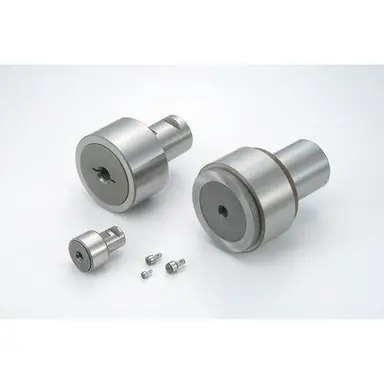
Can track bearings withstand harsh environments or exposure to contaminants?
Track bearings are designed to operate in a wide range of environments, including harsh conditions and exposure to contaminants. However, the ability of track bearings to withstand such environments depends on their specific design, materials, and protective measures. Here’s a detailed explanation:
Many track bearings are engineered with features that enhance their resistance to harsh environments and contaminants. These features may include:
- Sealing and Shielding: Some track bearings are equipped with seals or shields that provide a physical barrier against contaminants such as dirt, dust, water, and debris. These seals or shields help prevent the entry of contaminants into the bearing’s internal components, reducing the risk of damage and premature wear.
- Corrosion Resistance: Track bearings intended for use in corrosive environments are often constructed from materials that offer high corrosion resistance. Stainless steel, for example, is commonly used due to its ability to withstand exposure to moisture, chemicals, and other corrosive substances.
- Specialized Coatings: Some track bearings may feature specialized coatings or surface treatments that provide additional protection against contaminants and harsh conditions. These coatings can enhance the bearing’s resistance to corrosion, abrasion, and chemical exposure.
- High-Temperature Capability: Certain track bearings are designed to withstand high-temperature environments. They are typically constructed using heat-resistant materials and lubricants that can maintain their structural integrity and performance even under extreme heat.
- Environmental Sealing: In applications where track bearings are exposed to extreme conditions, such as underwater or in highly dusty environments, special environmental sealing measures may be employed. These measures can include the use of advanced sealing technologies or the encapsulation of the bearings within protective housings.
While track bearings are designed to withstand harsh environments and exposure to contaminants, it is important to note that their performance and longevity can still be affected over time. Regular maintenance, including cleaning, inspection, and lubrication, is crucial to ensure proper functioning and to mitigate the impact of contaminants on the bearings.
It is recommended to consult the manufacturer’s specifications and guidelines for the track bearings being used in a specific application. Manufacturers often provide information on the environmental ratings and limits of their bearings, helping users determine the suitability of the bearings for particular harsh environments or exposure to contaminants.
By selecting track bearings with appropriate features, materials, and protection, and by implementing proper maintenance practices, it is possible to enhance the bearings’ ability to withstand harsh environments and exposure to contaminants, thereby maximizing their performance and longevity.
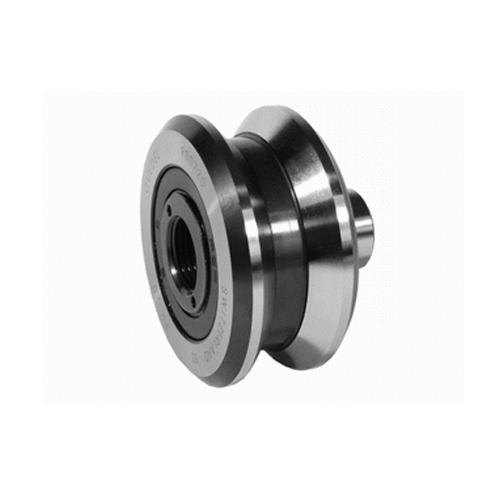
What are the components of a track bearing assembly and their functions?
A track bearing assembly consists of several components that work together to facilitate smooth and controlled motion along a track or guide rail. Let’s explore the components of a typical track bearing assembly and their functions:
- Outer Ring: The outer ring is the outermost component of a track bearing assembly. It provides structural support and houses the rolling elements. The outer ring is designed with a track or guide surface that interfaces with the track or rail, allowing the bearing to move along the desired path.
- Inner Ring: The inner ring is located inside the outer ring and provides a mounting surface for the bearing assembly. It may have a stud or shaft for attaching the bearing to the application. The inner ring helps in aligning and positioning the bearing assembly.
- Rolling Elements: The rolling elements are the components that enable smooth rolling motion between the inner and outer rings. In track bearings, the rolling elements are typically in the form of rollers or needles. They are designed to minimize friction and distribute the load evenly along the track surface.
- Cage: The cage, also known as a retainer, is a component that holds the rolling elements in position and maintains proper spacing between them. The cage prevents the rolling elements from contacting each other, reducing friction and wear. It also helps in guiding the rolling elements during operation.
- Seals or Shields: Track bearings often incorporate seals or shields to protect the internal components from contaminants such as dirt, dust, and moisture. Seals provide a physical barrier between the bearing and the external environment, while shields offer partial protection while allowing some lubrication to reach the rolling elements.
- Lubrication: Proper lubrication is crucial for the smooth operation and longevity of track bearings. Lubrication reduces friction, dissipates heat, and prevents wear between the rolling elements and raceways. Lubricants can be applied through grease fittings or oil ports, ensuring that the rolling elements roll smoothly along the track surface.
- Mounting Hardware: Depending on the specific design and application requirements, track bearing assemblies may include mounting hardware such as studs, bolts, or fasteners. These components are used to securely attach the bearing assembly to the application, ensuring proper alignment and stability.
By combining these components, a track bearing assembly provides reliable and controlled motion along a track or guide rail. The outer and inner rings, along with the rolling elements and cage, enable smooth rolling motion, while seals or shields protect the internal components from contaminants. Proper lubrication and mounting hardware ensure optimal performance and longevity of the track bearing assembly.


editor by CX 2024-02-04